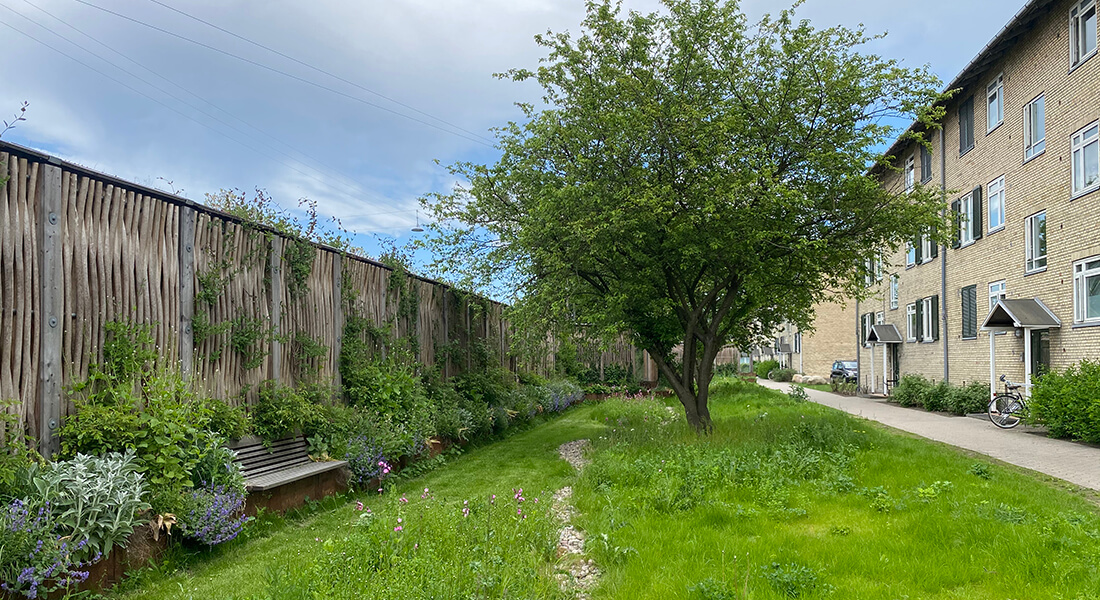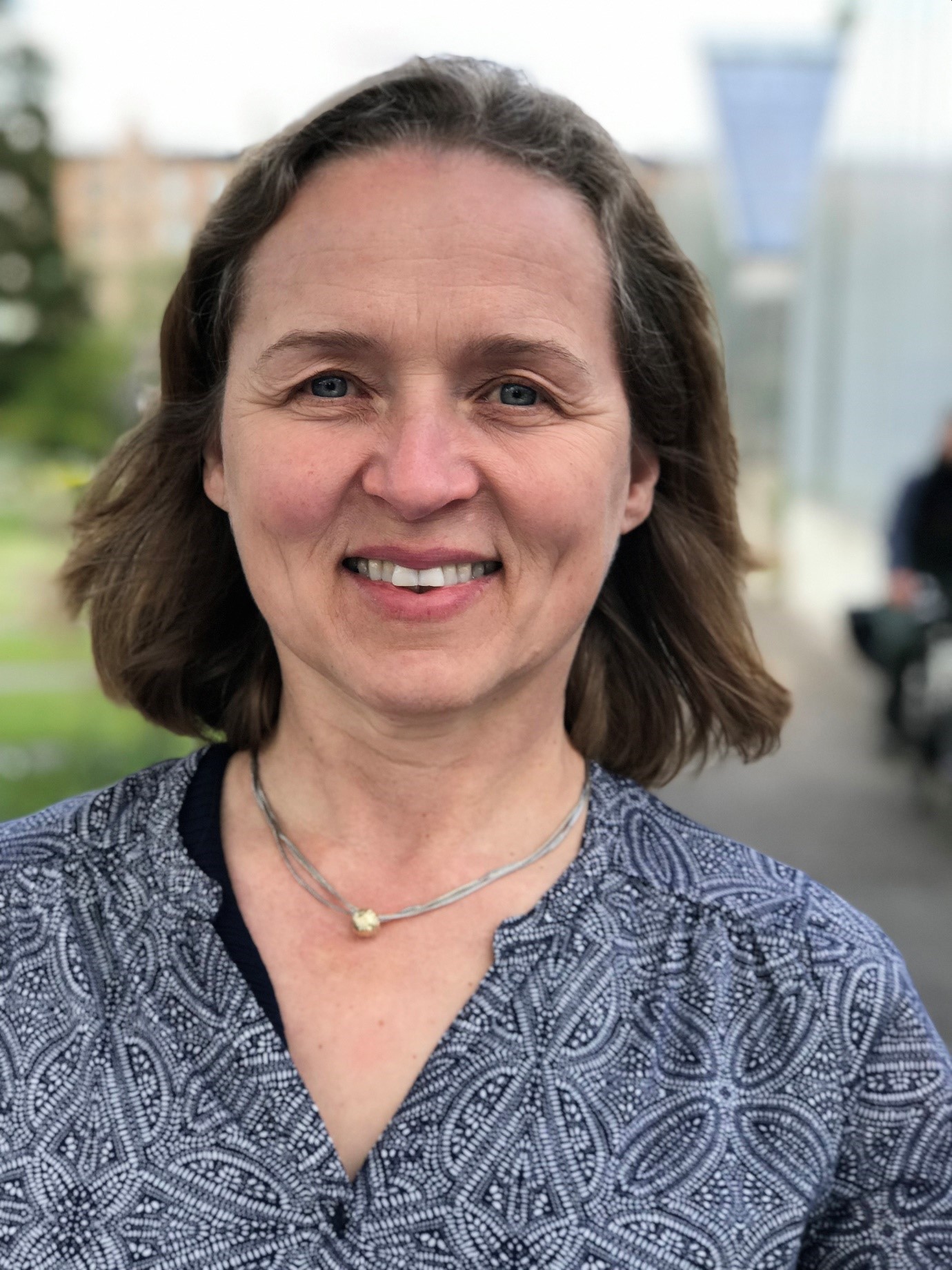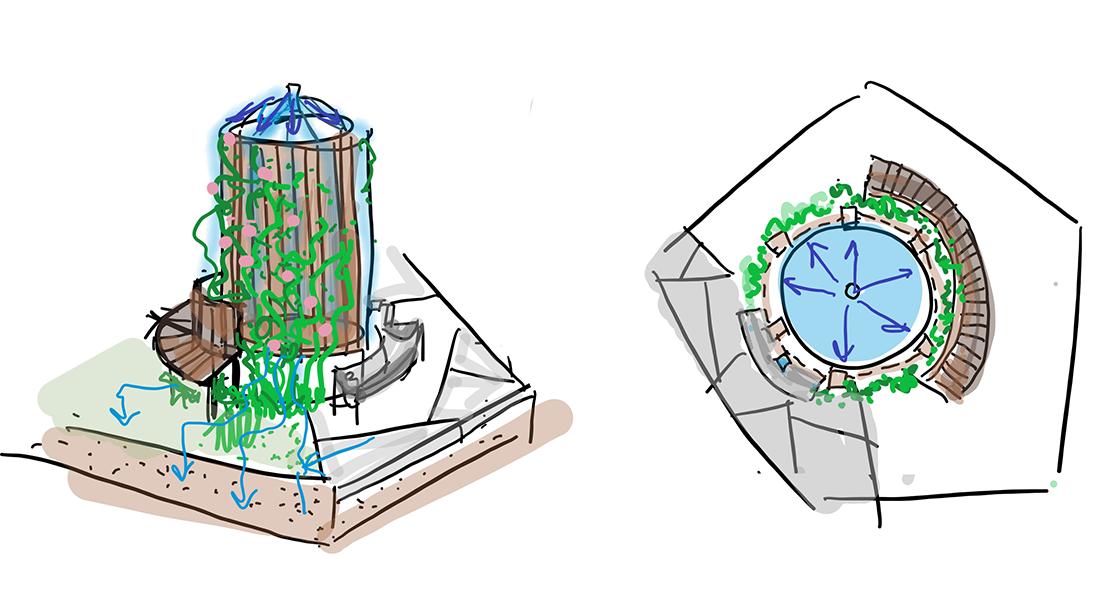Green Climate Shield can absorb water and lower traffic noise

The Green Climate Shield, seen from the inside, two years after it was built. The shield provides the setting for a completely new green space and creates a garden-like atmosphere in a close residential area. (The connected building is just opposite to the right outside the photo). Photo: Pilebyg.
The Green Climate Shield consists of a wall and a plant box. The wall consists of willow wickerwork and is lined with mineral wool, which can absorb rainwater for later evaporation, while the plant box can accommodate additional water for the plants and allow for seepage.
The shield is dimensioned to handle up to approximately the 10-year-rain by evaporation and percolation, i.e. the same level as the public sewer. In case of extreme rain, the excess water is led to a green neighbouring area, which can detain the water by means of a raised terrain in the form of a small earthen dike along the edge. The bathtub that then arises on top of the ground can contain large amounts of water and without problems manage for example the 100-year-event, which is the level that is promised with the Copenhagen Cloudburst plan.
By handling the rain locally, you can use the everyday rain as the life-giving resource it really is to create green environments with good conditions for nature, which are nice for people to stay in. With the handling of extreme rain on top of the ground, the water can also easily be withheld, so that the heavy and CO2-expensive solutions with cloudburst tunnels and reprofiling of roads can be avoided or scaled down.
The principle can vary and be adapted to local space conditions and desires. Another environmental advantage of the Green Climate Shield is that the water is led from the roof to the top of the climate shield solely by means of gravity. This means that there is no need for pumps, even though the water is processed over the ground.
Compared with other green solutions for handling rainwater flow, e.g. rain beds, the Green Climate Shield can handle the water over ground, so no large holes should be dug or soil transported from the city. This means that the solution is inexpensive and easy to set up and CO2 is saved. The solution can also be used for contaminated soil because the water is primarily evaporated.
In a larger context, the shield will also contribute to a better water balance in the city because the evaporation increases and reduce the risk of overheating.
You can read more about the Green Climate Shield here (only in Danish):
Contact

Marina Bergen Jensen
mbj@ign.ku.dk
27 24 44 47
Participants in the project
University of Copenhagen, in collaboration with the Danish Technological Institute, the City of Copenhagen, Boligforeningen 3B and KAB, Tim Larsen Engineering, Malmos A/S, Per Aarsleff A/S, Wavin Denmark and Pilebyg A/S.
The project is financed by
The Danish Environmental Protection Agency through the MUDP Programme and the City of Copenhagen.
The development of the shield is financed by the Ministry of Environment.
Project period: 2013-2020
Watch a video about the Green Climate Shield
(in Danish only)
Denmark’s first Green Climate Shield was built in 2019 at Folehaven in Valby – one of the busiest roads in Copenhagen with 45,000 cars a day. The screen is made of a three-metre-high noise shield, which also receives roofing water from a 3-storey property to create a green space between the buildings and the road. The shield is planted with climbers and flowering ground-covering plants and equipped with benches.
The choice of plants favours bees and thus also other nectar and pollen dependent insects. The plants on the shield are primarily native, flowering species with a long growing season. In addition, the green area between the shield and the buildings is designed as a dry meadow. Since its establishment, the area has developed into a small oasis for nature and residents.
In contrast to traditional noise barriers, the Green Climate Shield is made of sustainable materials in the form of robinia pillars and willow modules, which is a great advantage compared to traditional noise barriers and sewer pipes where plastic, steel and concrete are the primary materials. However, mineral wool, steel fittings and concrete foundations are still included. In future solutions, efforts will be made to minimise the use of these materials.


I think the Green Climate Shield is a bit of a stroke of genius. Firstly, the CO2 and the environmental footprint is low – there is no disposal of soil, most of the materials are renewable and there is no need to use pumps. Secondly, the solution improves the city’s water balance by increasing evaporation – this is both good for regulating the temperature in the city and means that the solution can be used where, for example, there is high-level groundwater. Thirdly – and this is almost the best – the shield, which does not take up a lot of space, can be designed in many ways, so that the additional values that make sense locally can be highlighted – both values linked to biodiversity and social/cultural values such as noise reduction, play element, seating areas, water tank shielding or even a football boot washing place".
